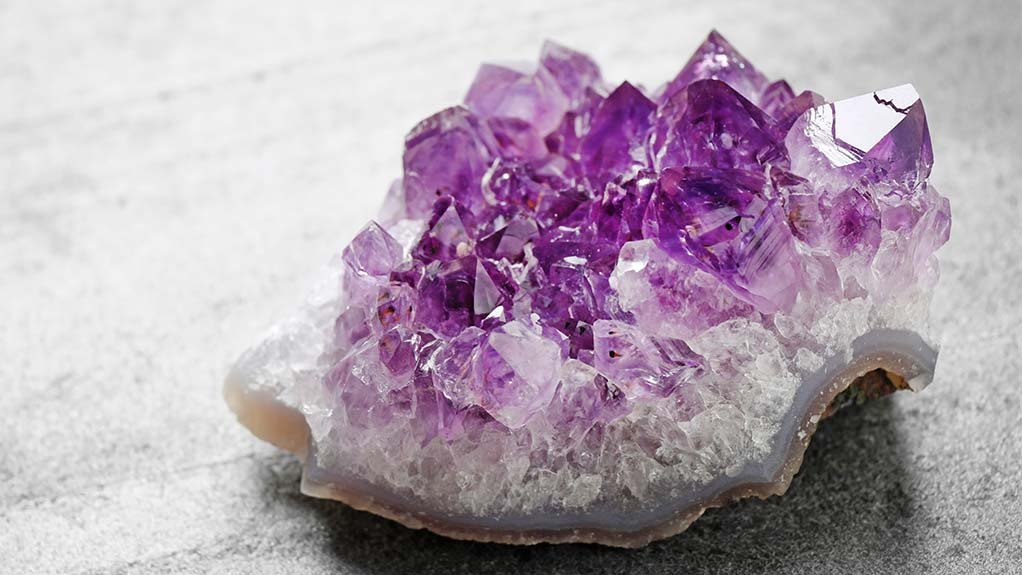Zambia’s amethysts, emeralds still tops, but mining could be better



MAJOR MINER Kariba Minerals’ Mapatizya mine produces more than 90% of the amethyst originating from Zambia
GLOBAL GEM Gemfields’ Kagem emerald mine, in the southern part of Zambia’s Copperbelt, supplies one-third of the world’s emeralds
The state of Zambia’s amethyst and emerald mining sectors has improved after the onset of the Covid-19 pandemic resulted in poor demand. However, the sectors continue to battle systemic undercapitalisation, while the chamber continues to advocate for amendments to the tax regime to encourage foreign direct investment, says Zambia Chamber of Mines (ZCM) CEO Sokwani Chilembo.
“There is a lack of access to risk capital for most small- and medium-scale miners operating in these sectors, which struggle with relatively high effective tax and duty rates, compared with competing mining destinations Colombia and Brazil.”
This is despite Zambia’s being home to the largest amethyst and emerald mines globally.
Amethyst producer Kariba Minerals’ Mapatizya mine has been in operation in the Zimba district region for more than 50 years, producing more than 90% of the amethyst originating from Zambia, while gemstone miner Gemfields’ Kagem emerald mine, in the southern part of Zambia’s Copperbelt, supplies one-third of the world’s emeralds.
The country also ranks as one of the top producers of amethysts and emeralds globally.
Negotiations with government to permanently remove export duties on gemstones, precious metals, nickel, manganese and other mineral exports are still ongoing, says Chilembo.
The removal of these export duties will attract more capital to the country’s mining industry by offering investors better margins and, thereby, increase Zambia’s amethyst and emerald production, in conjunction with the reduction of the country’s gemstone mineral royalty to 3%.
ZCM’s engagement with government has been ongoing since last yearand forms part of the 2021 local Mining Indaba resolutions, which mapped out the strategy government needed to adopt to make overall mining competitive, notes Chilembo.
Former Mines and Minerals Development Minister Richard Musukwa emphasised that the Indaba, held in April last year, was focused on developing fiscal outcomes for the mining sector that achieve a fair, consistent and predictable mining tax regime.
Encouraging Exploration
ZCM believes that there is room to expand exploration in Zambia for cobalt, nickel, gold, emeralds, manganese and copper to diversify the country’s minerals basket, but an investor-friendly environment is needed to encourage such ventures.
Significant exploration is needed, but it is a high-risk activity, as the chances of not finding anything are high.
Therefore, exploration will occur only if investors risking their capital have the potential to make a good return on the small percentage of discoveries that can be effectively mined, says ZCM president Dr Godwin Beene in issue seven of the chamber’s 2022 newsletters.
“The main challenge is Zambia’s uncompetitive mining tax regime, which was prone to constant tinkering and change by the previous government.
“Unfortunately, the constant short-term shakedown of the industry to plug some of the gaping holes in the fiscus and to keep the party going really destroyed trust and has made investors extremely wary of Zambia.”
Modern mining is a high-risk, complex undertaking – there can easily be a 15-year time gap between a mining company finding a deposit, bringing a mine into production and then generating its first income, Beene explains.
“The whole process requires billions of dollars of investment in a large operation, before there is any return at all. Of course, these risks are surmountable and potentially attractive, if the return is there. Right now, it is not. So, we need to offer an adequate return if we are to encourage investment.”
However, the announcement in Zambia’s 2022 Budget Speech that mineral royalties will once again be aligned with global practice and regarded as costs to a business and, therefore, deductible against income tax, is a crucial first step in “giving investors the green light that they have been waiting for”, he highlights.
Article Enquiry
Email Article
Save Article
Feedback
To advertise email advertising@creamermedia.co.za or click here
Announcements
What's On
Subscribe to improve your user experience...
Option 1 (equivalent of R125 a month):
Receive a weekly copy of Creamer Media's Engineering News & Mining Weekly magazine
(print copy for those in South Africa and e-magazine for those outside of South Africa)
Receive daily email newsletters
Access to full search results
Access archive of magazine back copies
Access to Projects in Progress
Access to ONE Research Report of your choice in PDF format
Option 2 (equivalent of R375 a month):
All benefits from Option 1
PLUS
Access to Creamer Media's Research Channel Africa for ALL Research Reports, in PDF format, on various industrial and mining sectors
including Electricity; Water; Energy Transition; Hydrogen; Roads, Rail and Ports; Coal; Gold; Platinum; Battery Metals; etc.
Already a subscriber?
Forgotten your password?
Receive weekly copy of Creamer Media's Engineering News & Mining Weekly magazine (print copy for those in South Africa and e-magazine for those outside of South Africa)
➕
Recieve daily email newsletters
➕
Access to full search results
➕
Access archive of magazine back copies
➕
Access to Projects in Progress
➕
Access to ONE Research Report of your choice in PDF format
RESEARCH CHANNEL AFRICA
R4500 (equivalent of R375 a month)
SUBSCRIBEAll benefits from Option 1
➕
Access to Creamer Media's Research Channel Africa for ALL Research Reports on various industrial and mining sectors, in PDF format, including on:
Electricity
➕
Water
➕
Energy Transition
➕
Hydrogen
➕
Roads, Rail and Ports
➕
Coal
➕
Gold
➕
Platinum
➕
Battery Metals
➕
etc.
Receive all benefits from Option 1 or Option 2 delivered to numerous people at your company
➕
Multiple User names and Passwords for simultaneous log-ins
➕
Intranet integration access to all in your organisation
















